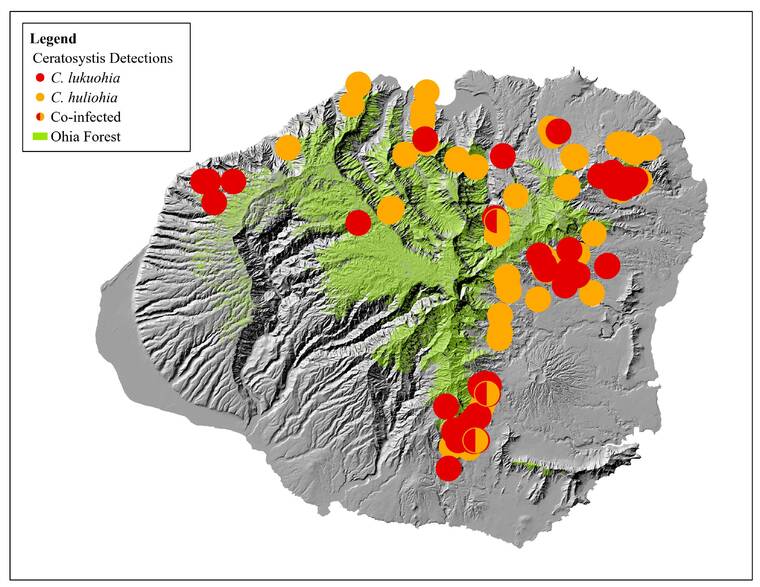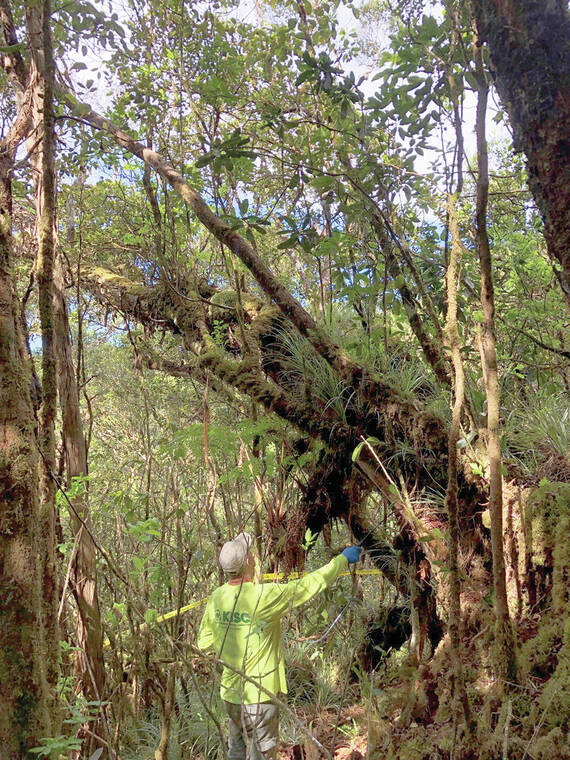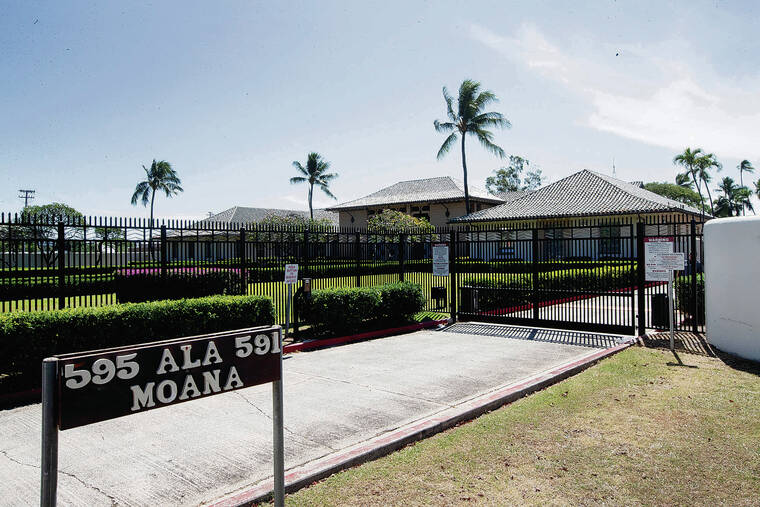KOKE‘E — Rapid ‘ohi‘a death has been found in a dead tree on the Alaka‘i Plateau, the state Department of Land and Natural Resources and the Kaua‘i Invasive Species Committee reported Tuesday.
The announcement marks the first confirmed incursion of ROD, which kills infected ohi‘a (Metrosideros polymorpha), in the pristine wilderness area.
“We spotted this tree during our regular helicopter surveys late last year,” Mapuana O’Sullivan, forest-management supervisor with the DLNR Division of Forestry and Wildlife Kaua‘i Branch, said in a joint DLNR-KISC press release.
“Because the area is one of the most biodiverse on the island, home to numerous native flora and fauna and critical to our watershed, we quickly returned on foot to take wood-chip samples,” O’Sullivan continued.
ROD was first recorded on Kaua‘i in the Moloa‘a Forest Reserve in 2018. Since then, about 60 trees on the Alaka‘i Plateau have been sampled for the fungal disease with negative results, until now.
Two fungal pathogens cause ROD. The U.S. Department of Agriculture Agricultural Research Service in Hilo on Hawai‘i Island has revealed the Alaka‘i tree, found at 4,100 feet elevation, was killed by the more-virulent species, known as Ceratocystis lukuohia.
ROD infects trees through fresh wounds. The Kaua‘i ROD Rapid Response team has therefore decided against cutting the infected ‘ohi‘a down, because the operation (performed to mitigate the airborne spread of ROD) would damage healthy specimens nearby.
Responders are employing a new approach instead.
“The idea is to keep beetles from burrowing into the dead ‘ohi‘a,” KISC Manager Tiffani Keanini said in the release. “When ambrosia beetles tunnel into diseased tress, they produce a wood powder that can include live Ceratocystis spores. This is how the fungus is released into the environment. So, we’re applying an environmentally friendly beetle repellent to the bark of the tree that’s basically a ‘no vacancy’ sign, telling beetles the tree is fully occupied and no longer suitable to colonize.”
If successful, the approach could be used throughout Hawai‘i, according to DLNR and KISC, which report a total of 175 ‘ohi‘a on Kaua‘i have tested positive for Ceratocystis lukuohia through December 2021.
The number testing positive for Ceratocystis huliohia, the less-virulent variety, is 114.
Three Kaua‘i ‘ohi‘a have tested positive for both pathogens.
Importance of ‘ohi‘a
KISC and the Kaua‘i Forest Bird Recovery Project will review the importance of ‘ohi‘a in the environment, culture and watersheds of Kaua‘i on Feb. 25, during a “Forest Friday” webinar.
Personnel from groups including KISC and DOFAW are set to provide updates on efforts to save ‘ohi‘a, ROD’s presence on Kaua‘i and current legislation proposing to name ‘ohi‘a the Hawai‘i state endemic tree.
“This virtual talk story is a unique opportunity to discover what is happening with forest conservation on Kaua‘i,” a KISC press release states. “People are encouraged to participate in the conversation by submitting questions during the event or in advance by emailing saveohia@hawaii.edu.”
To register for the event on Zoom, visit bit.ly/ohiaonkauai online.
Viewers can also watch live on KISC and KFBRP’s Facebook pages.
Previous Forest Friday installments can be found on the groups’ respective YouTube channels.
•••
Scott Yunker, reporter, can be reached at 245-0437 or syunker@thegardenisland.com.







